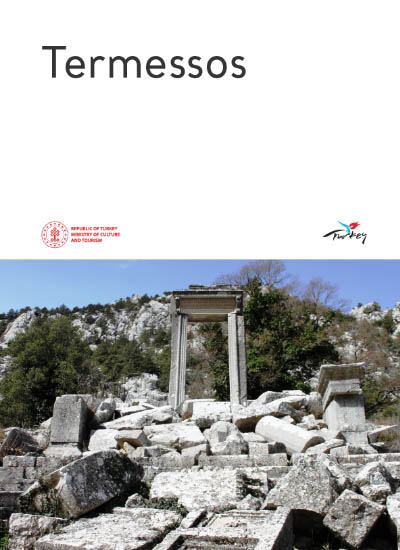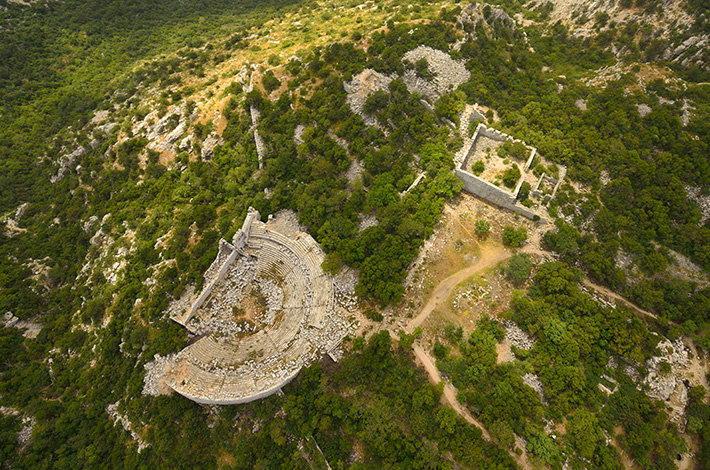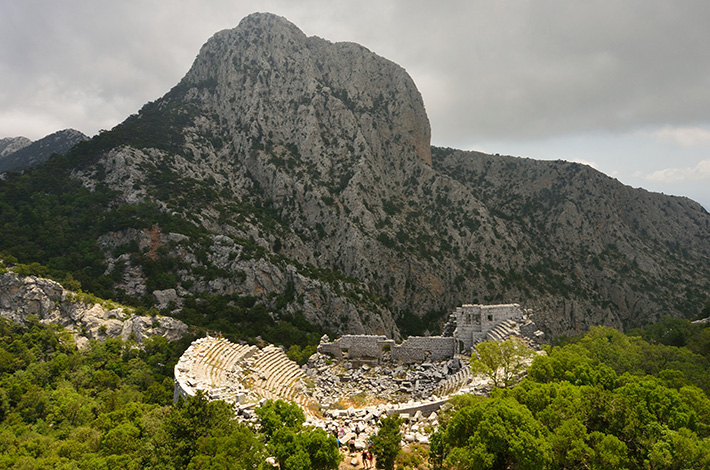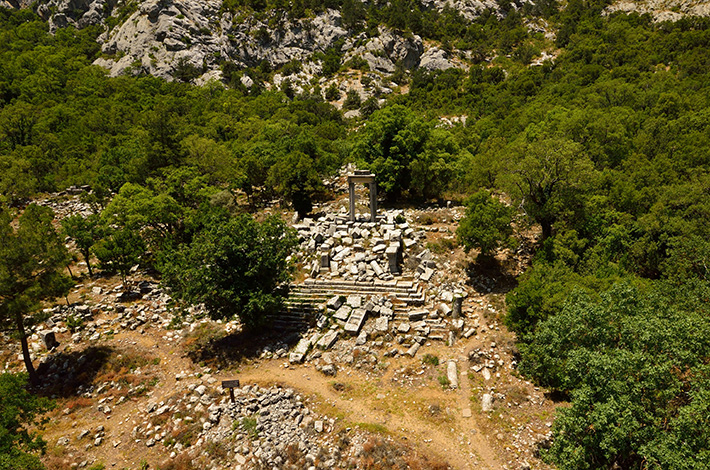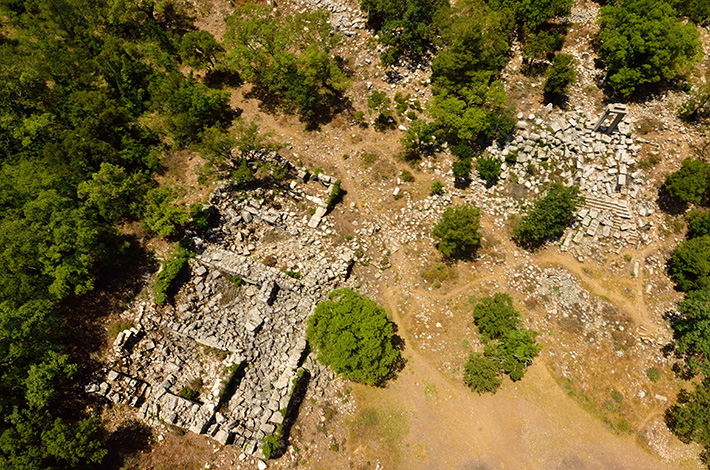The ancient city of Termessos is situated in a valley between the peaks of Solymos (Güllük) Mountain in the southwestern part of the Pisidia Region known as 'Milyas'. It was founded by the Solyms, who were descendants of the Luwians, one of the oldest peoples of Anatolia. The city is located in the National Park of the same name and is one of the best-preserved ancient cities. The ruins on Güllük Mountain can be accessed via a special road on the left, starting from the 24th kilometre of the Antalya-Korkuteli highway. The city's historical significance dates back to 333 BC when Alexander the Great besieged it, but the people of Termessos defended their city and did not surrender. After Alexander's death, the city was taken over by the Ptolemies. Amyntas of Galatia ruled Termessos along with other cities of Pisidia from 36 to 25 BC. Based on the coins, it can be inferred that the city maintained its independence during the Roman Empire. However, there is no available information regarding the city's status during the Byzantine period and beyond. The city of Termessos remains well-preserved, having not been resettled since its abandonment, except for damage caused by earthquakes and natural disasters. The ruins of the city start with the Hellenistic Period city wall near Yenicekahve on the Antalya-Korkuteli highway and extend to the summit of Güllük Mountain. Following the path up to the city from the car park, you will encounter the steps and monumental entrance of the Ionian temple, built during the reign of Emperor Hadrian, on the right-hand side. Continuing to climb southwards from the area where the lower city walls and the water source are located, you will find the Gymnasium on the left. Part of the first floor of the Gymnasium has survived. To the southwest of the building, which comprises numerous rooms and halls, lies a colonnaded street with shops situated behind it. In the immediate vicinity, one can still observe the canals, demonstrating the effectiveness of the sewerage network. On the left side of the path leading to the forest observation point, lies the area where many official buildings of the city are located. The first remains on the plain belong to the agora. The portico or stoa to the west was constructed during the reign of Attalos II (159-138 BC) and is in the Doric order. The theatre is located to the east of the agora, leaning against the slope and overlooking the Gulf of Antalya. About 100 metres southwest of the theatre stands the assembly building (Bouleuterion), which reaches the height of the roof. On the plain to the east of the Agora, there are 5 interconnected cisterns that are unique in terms of depth and width. To the southwest of the city lie the ruins of the 'House of the Founder', an exceptionally beautiful Roman villa. The façade wall, which is in Doric order, reaches a height of 6m. The building was named 'House of the Founder' due to the inscription on the left side of the door. Termessos boasts numerous temples and vast cemeteries, with a rich variety and ornamentation of tombs. Among them is the tomb of Alketas (319 BC), an important commander during the period of Alexander the Great. Other tombs are also significant in shedding light on the city's history. In addition to the monumental tombs, the cemetery also features a large area occupied by a sarcophagus with a shield motif. The Antalya Museum exhibits the most interesting artefact of Termessos, the 'Dog Sarcophagus', in the 'Sarcophagi Hall'. The inscription written for Stefanos, the dog, by his owner is unique and holds special importance.
TERMESSOS ARCHAEOLOGICAL SITE
